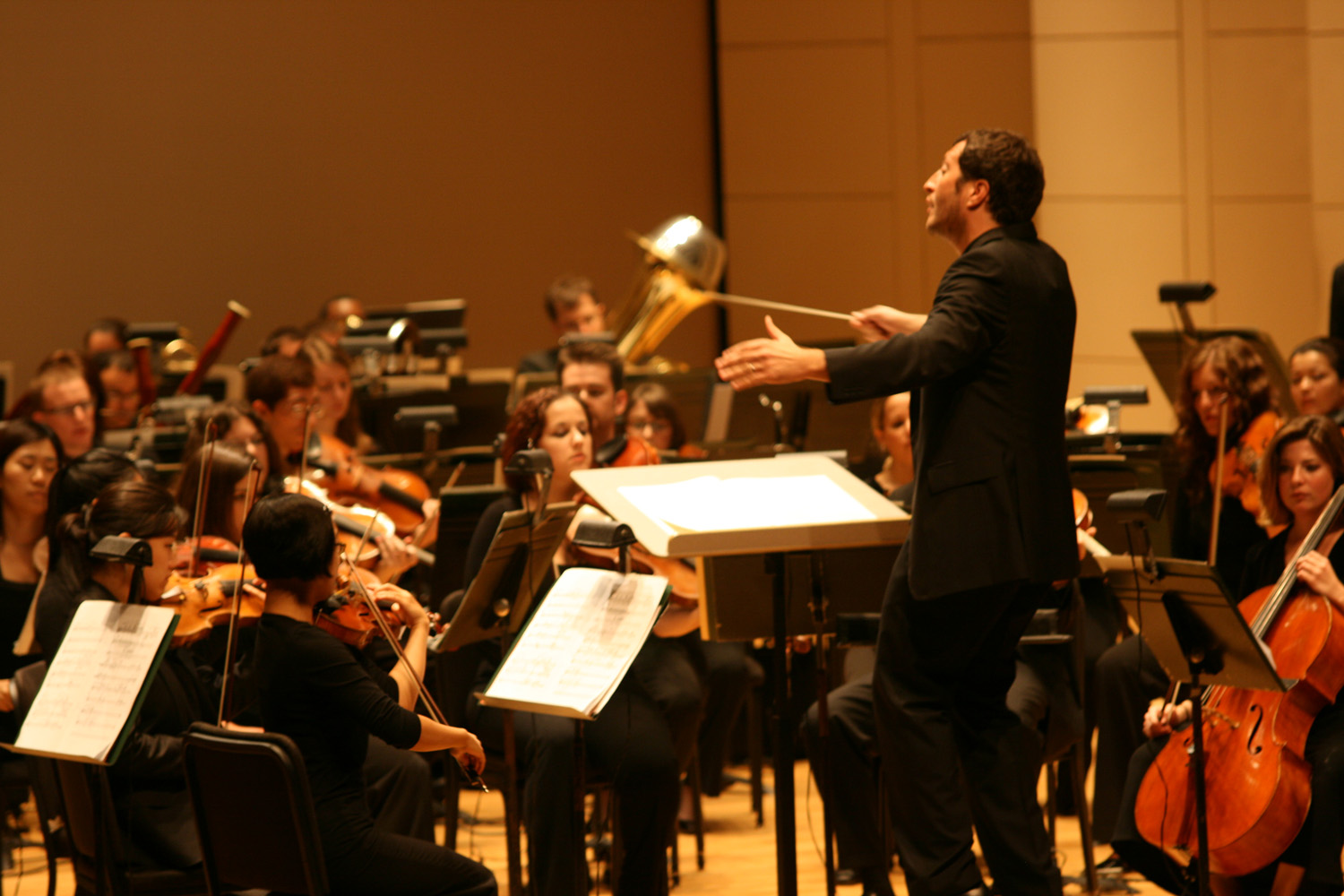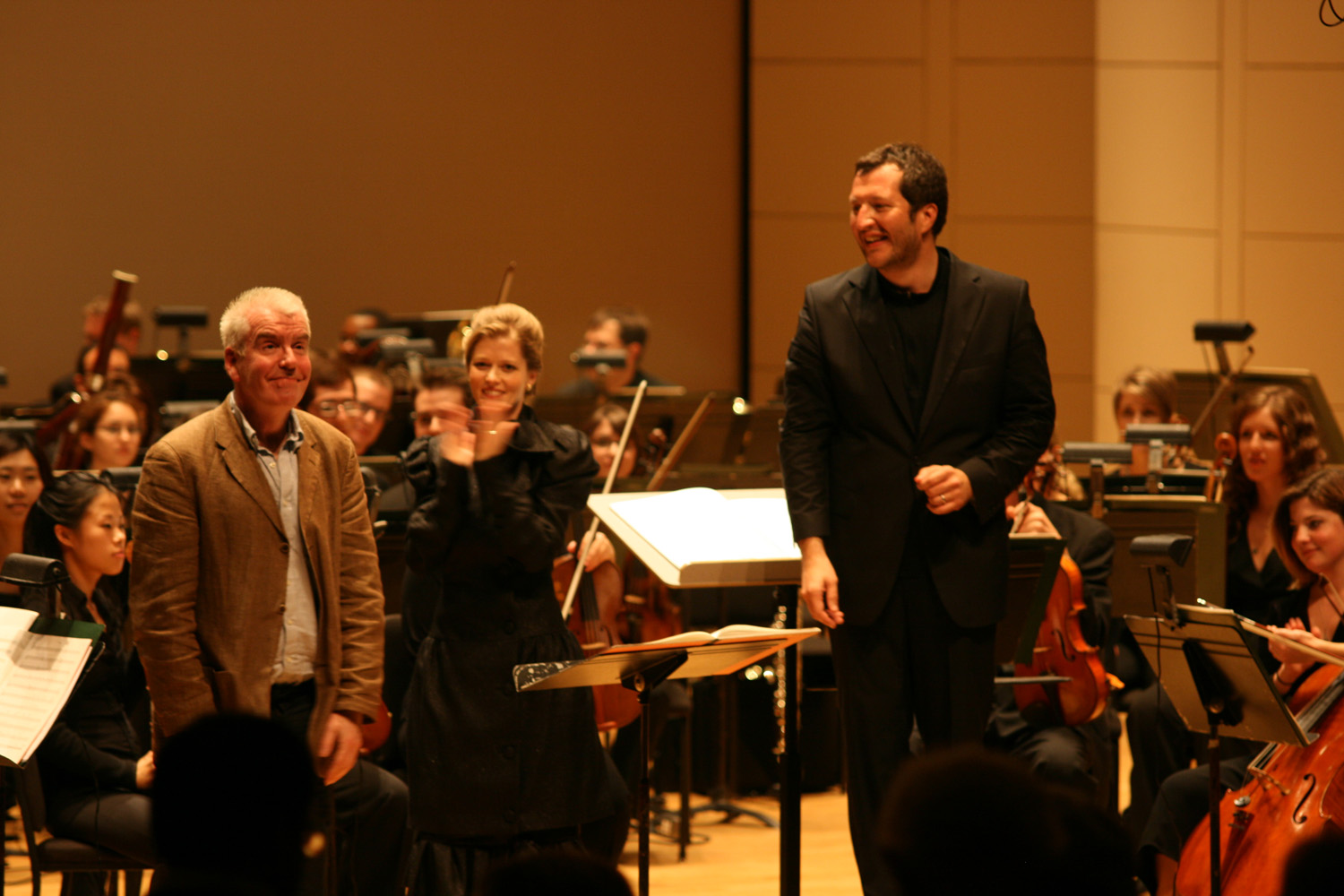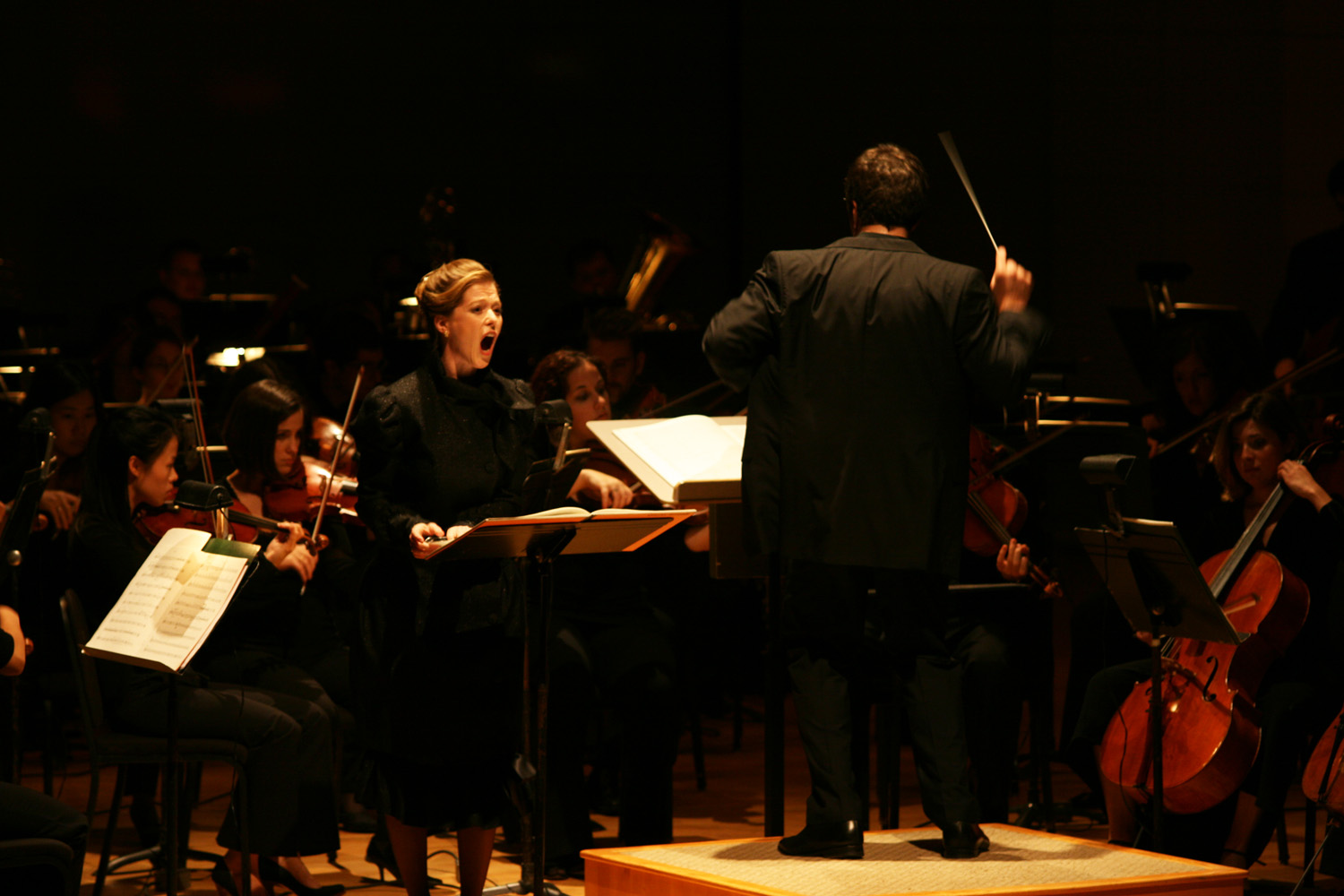Ades leads New World in bracing blast of the modern
 If anyone still doubts the standing and international renown of the New World Symphony, all they need do is consider Saturday night’s event at the Lincoln Theatre, with acclaimed British composer Thomas Ades making his local debut conducting a program that included two American premieres.
If anyone still doubts the standing and international renown of the New World Symphony, all they need do is consider Saturday night’s event at the Lincoln Theatre, with acclaimed British composer Thomas Ades making his local debut conducting a program that included two American premieres.
Ades, 37, has been making waves since his late teens. Championed by Sir Simon Rattle, Ades’s brilliant, idiosyncratic music has quickly made him one of the leading composers of his generation, with such works as Asyla, his Chamber Symphony and the operas The Tempest and Powder Her Face earning wide accolades.
Ades’ program, the New World’s first Sounds of the Times event of the season, split the lineup between two of his own works and two by Irish composer Gerald Barry, who was also on hand to introduce his music.
Ades’s music framed the evening, and provided a rough guide to the rapid evolution in this young composer’s style. Written in 1996 for the opening of the Halle Orchestra’s Bridgewater Hall home in Manchester, These Premises Are Alarmed is a crazed, four-minute ride for large orchestra. Events, and jazz riffs fly by so fast, the ear can barely grasp them, strident violins and high winds vie with galumphing brass and lower strings. Ades led a full-tilt performance of this short-attention-span anti-overture that gave the exuberant music full, uninhibited impact.
That Ades is considerably more than a purveyor of technical symphonic wizardry was made clear with his most recent work, Tevot. Jointly commissioned by the Berlin Philharmonic and Carnegie Hall, the work was premiered in Berlin and New York by Sir Simon and the Berliners last year.
A vast 20-minute single movement, Tevot takes its title from the Hebrew word for “arks.” Yet Ades’ inspiration is more metaphorical than literal or religious, centered on the idea of a vessel of sorts that carries humanity through a turbulent tempest to a safe haven.
Tevot is characteristic in its urgency and massive fury, with extreme high contrasts, flutes, piccolo and screaming violins set against churning low brass and strings. The music segues into a violent, swirling maelstrom, climax piled upon climax by the orchestra and large percussion battery. Yet somehow Ades’ musical argument avoids bombast and is precisely focused even when the huge forces are in full, massive cry.
As always, Ades’ Tevot pushes the orchestra’s instruments to their limits—and in the case of an unfortunate horn player, beyond them—-with music of intensely communicative power and astringent grandeur. As the volume is at its densest, the fury suddenly abates, and there is a radiant lyrical opening up, trumpets and flute bestowing a spare consoling lyricism that lends undeniable solace.
Tevot is a magnificent achievement, a work of its time that could not have been written by any other composer. Under the composer’s energetic direction, this difficult music was put across with gleaming virtuosity and seismic impact by the New World players.
The rest of the program was taken up by music of Gerald Barry, for whom Ades has been a strong advocate.
Barry’s radio opera, The Stronger, is, in essence, a bravura solo scena for soprano. On Christmas Eve, Madame X meets a longtime friend, Mademoiselle Y in a café. Over a long, discursive monologue, Madame X realizes that not only has her friend been having an affair with her husband, but that everything in Madame X’s life, from her husband’s favorite food to her clothes and her own son’s name, has originated with her rival. After a vituperative outburst, Madame X realizes that even with this knowledge she still retains her own character and will, and still possesses her husband, making her “the stronger” of the two.
The work has long a cappella stretches and Barry’s orchestral writing is cleverly balanced if less interesting than the elaborate solo vocals, written to a French text. Ades and Barbara Hannigan premiered the work in Paris in 2007, and the Canadian soprano’s performance of the tortuous vocal line was a tour de force, Hannigan sailing through the stratospheric leaps and tossing off high E flats with astounding facility and expressive poise. Not a great work, perhaps, but certainly a worthy vehicle for Hannigan’s remarkable artistry.
Considerably briefer, is Barry’s Diner. Though inspired by Edward Hopper’s famous Nighthawks painting, I hear little of the nocturnal urban loneliness in this raucous music, which has been colorfully termed, a “barn dance devised by a chaos theorist.” Can-can and various dance episodes race past in odd harmonic guises as a queasy undertow shifts the rhythmic underpinning. Beneath the boldly colored surface, Barry’s music has a wild, subversive quality, which is delightful and Ades and the New World gave the Irishman’s off-kilter dance terrific advocacy.

[Photos by Craig Hall for the New World Symphony.]
Posted in Performances
Leave a Comment
Sun Nov 23, 2008
at 4:44 pm
No Comments







